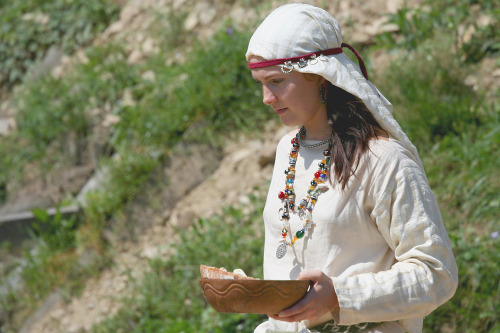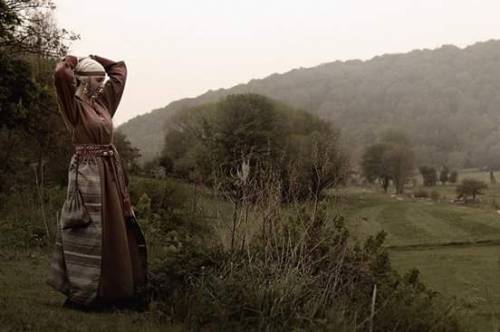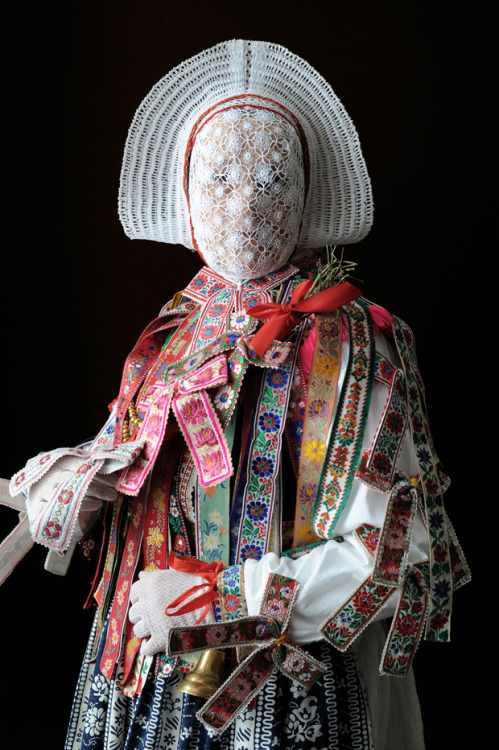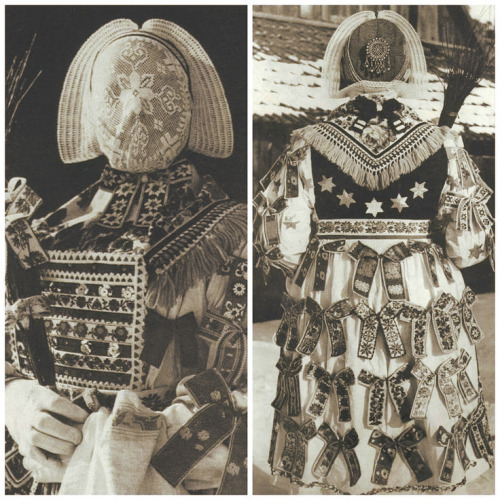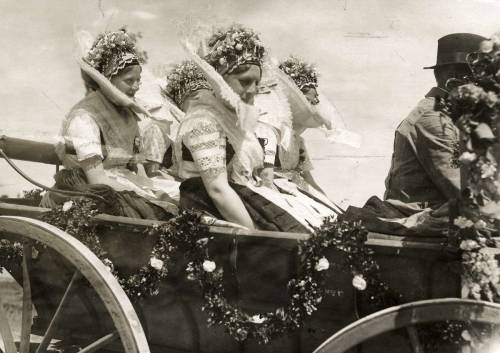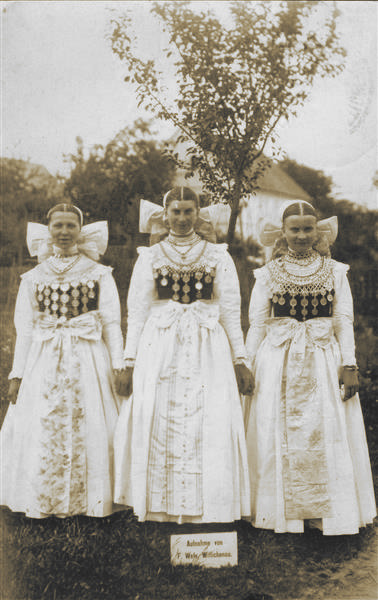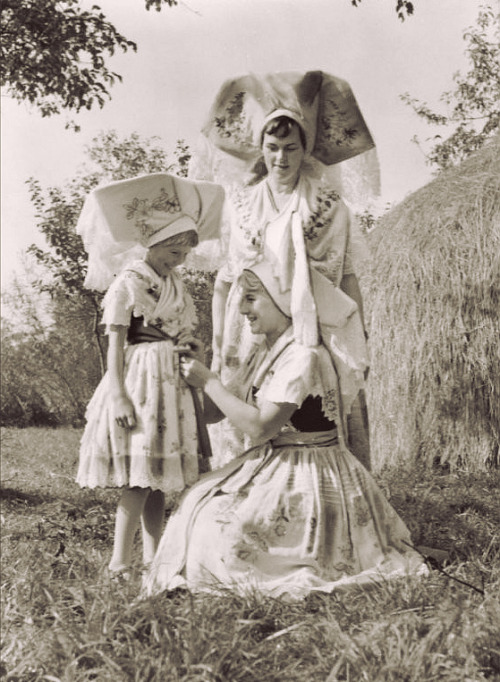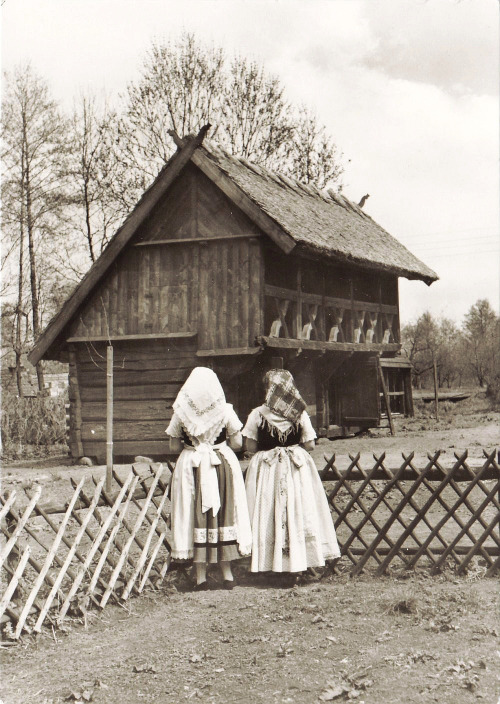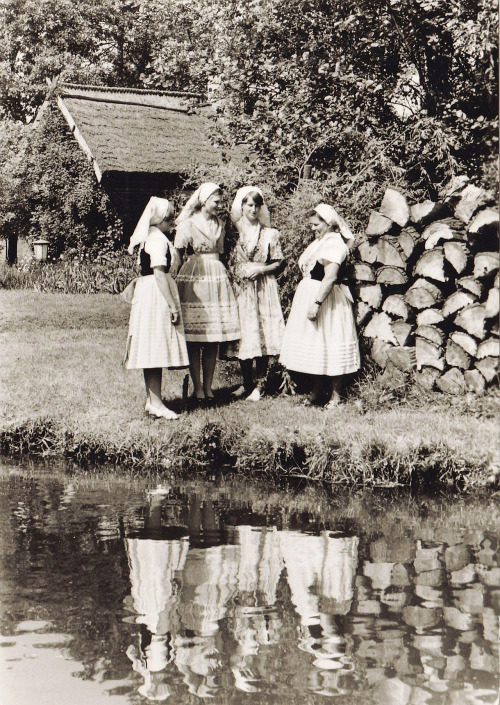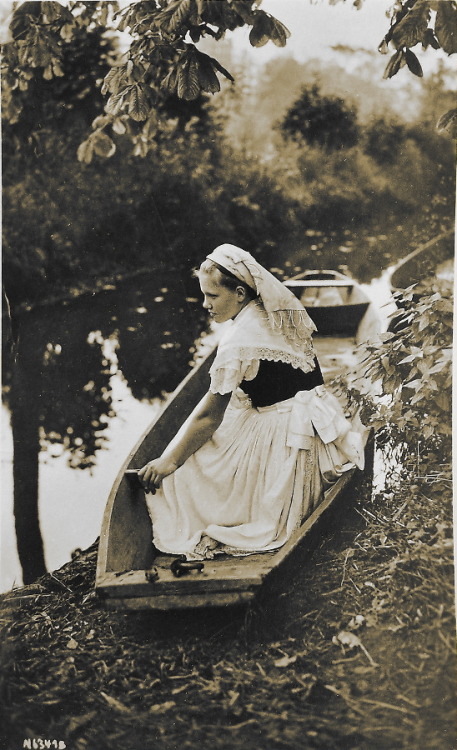#west slavs
Sorbian Bescherkinder. Photographed by Iwajla Klinke.
The Bescherkinder is an old Sorbian folk character found in the rituals that are associated with the celebration of the winter solstice. Being touched by one is believed to protect against the evil eye.
The Sorbs, historically known also as Lusatians and Wends, are a West Slavic minority group whose homeland is found in the historic region of Lusatia located between Germany and Poland. Starting from the 12th century to the modern period they have undergone heavy Germanization processes, but despite this they have managed to keep their ancestral Slavic identity, language, and distinct culture. Geneticist have also found a degree of genetic isolation among them when compared to their German neighbors, however at the same time have noted markers linking them closely to their West Slavic kin; the Poles, Kaszubs, Slovaks, and Czechs. Throughout history it has been believed that the Sorbs migrated from Lusatia to the Balkans initiating the birth of the Serbianpeople.
Post link
Traditional costumes of Sorbs (also known as Wends, Lusatians, Lusatian Sorbs or Lusatian Serbs) - Western Slavic minority in the territory of Germany. They live predominantly in the historical region of Lusatia - in the modern states of Brandenburg and Saxony. They speak Sorbian languages (Wendish, Lusatian) - closely related to Polish and Czech, divided into two main groups: Upper SorbianandLower Sorbian. Collection of archival photographs from vintage postcards.
Post link

